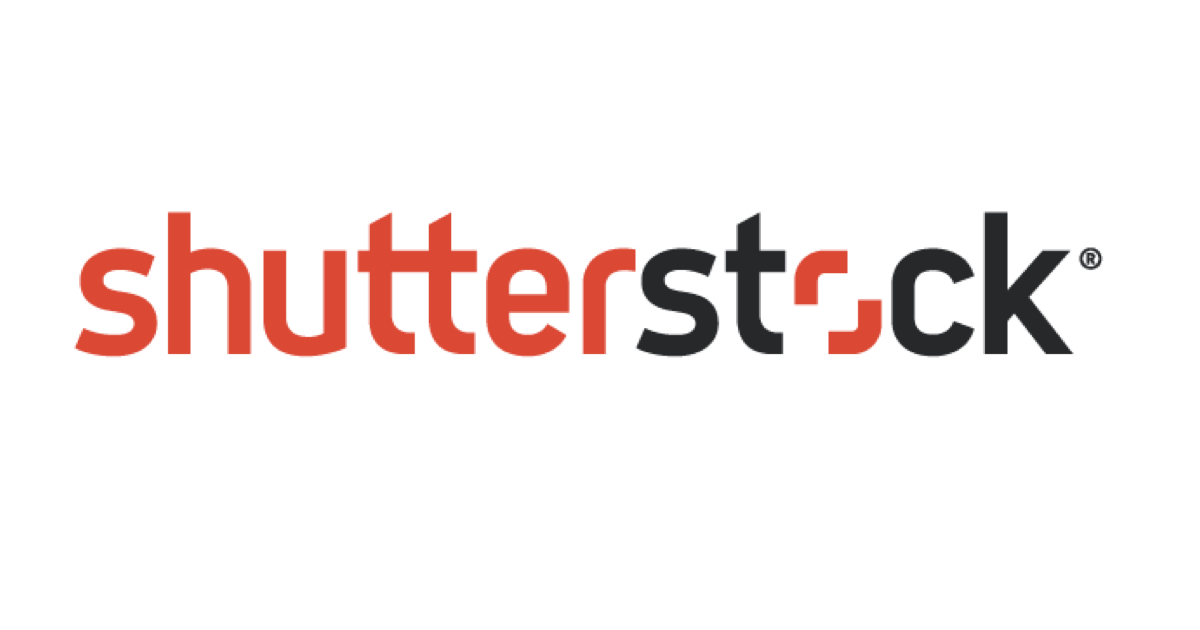1. Introduction
In the vast landscape of stock photography platforms, Shutterstock has emerged as a prominent player, attracting photographers from around the world. But is Shutterstock truly effective for selling photos? This blog post aims to evaluate the platform's effectiveness, taking into account various factors that can impact photographers' success.As photographers seek to monetize their craft, understanding the pros and cons of different platforms becomes crucial. Shutterstock, with its wide customer base and global reach, presents an enticing opportunity. However, it's essential to delve deeper into the platform's offerings to determine whether it aligns with photographers' goals and expectations.Also Read This: how to sell illustrations on adobe stock
2. Overview of Shutterstock

A. Background information about Shutterstock as a stock photography marketplace
Shutterstock was established in 2003 and has since grown into one of the largest stock photography platforms in the world. It serves as a marketplace connecting photographers and other content creators with customers seeking high-quality visual assets for various purposes, including websites, advertisements, publications, and more.B. Number of active users and contributors on the platform
Shutterstock boasts an extensive user base, with millions of customers actively searching for and purchasing images. Additionally, the platform has a substantial community of contributors, including photographers, illustrators, and videographers, who contribute their creative work to the marketplace.C. Explanation of how Shutterstock works for photographers
As a photographer on Shutterstock, you can sign up as a contributor and start uploading your photos to the platform. Once uploaded, your images go through a review process to ensure they meet quality standards and comply with guidelines. If approved, your photos become available for customers to license and download.Shutterstock operates on a royalty system, where photographers earn a percentage of the revenue generated from the sale of their images. The exact royalty rate depends on the licensing type and the photographer's level of contribution and sales on the platform.Photographers also have the option to participate in various programs and initiatives offered by Shutterstock, such as the Partner Program and the Custom Content program, which provide additional opportunities for exposure and income.Overall, Shutterstock provides a platform for photographers to showcase and sell their work to a vast customer base, offering potential financial rewards and exposure for their creative endeavors.Also Read This: Troubleshooting LinkedIn Certificate Upload Issues
3. Pros of Selling Photos on Shutterstock

A. Extensive customer base and global reach
One of the significant advantages of Shutterstock is its vast customer base. With millions of active users, the platform offers photographers the opportunity to reach a global audience. This extensive reach increases the chances of their photos being discovered and licensed by a diverse range of buyers from various industries and regions.B. Opportunities for exposure and visibility
Shutterstock's popularity and widespread usage mean that photographers have the potential to gain significant exposure for their work. The platform's search algorithms and recommendation systems help showcase images to relevant customers, increasing the visibility and discoverability of photographers' portfolios.C. Fair and transparent royalty structure
Shutterstock operates on a transparent royalty structure, allowing photographers to earn a percentage of the revenue generated from the sale of their images. While the exact royalty rates vary based on factors such as the type of license and the photographer's performance on the platform, the system provides a clear understanding of how much photographers can expect to earn from their sales.D. Easy-to-use interface and streamlined upload process
Shutterstock provides a user-friendly interface and streamlined upload process, making it convenient for photographers to submit their work. The platform offers efficient tools and features for organizing and categorizing images, simplifying the management of portfolios and making it easier to maintain an active presence on the platform.E. Variety of licensing options for buyers
Shutterstock offers a range of licensing options for buyers, catering to different needs and budgets. This variety increases the chances of photographers' images being licensed, as buyers can choose the licensing option that best suits their specific requirements. The availability of different licensing tiers, including subscriptions and on-demand purchases, ensures a continuous demand for diverse types of images.These pros highlight the potential benefits that photographers can enjoy by selling their photos on Shutterstock. From a wide customer base and exposure opportunities to a fair royalty structure and user-friendly interface, the platform offers several advantages for photographers looking to monetize their work.Also Read This: how to put image in tiktok comment
4. Cons of Selling Photos on Shutterstock
A. High competition and oversaturation of content
One of the main challenges photographers face on Shutterstock is the high level of competition and the oversaturation of content. With a large community of contributors, the platform houses a vast collection of images, making it more challenging for individual photos to stand out and gain attention from potential buyers.B. Stringent review process and rejection rates
Shutterstock employs a rigorous review process to ensure the quality and adherence to guidelines of the submitted images. While this is essential for maintaining a high standard of content, it also means that some photos may be rejected, even if they meet a photographer's subjective standards. Rejection rates can vary, and it can be disheartening for photographers to see their work not being accepted.C. Relatively low commission rates compared to other platforms
While Shutterstock provides a transparent royalty structure, some photographers may find the commission rates relatively low compared to other stock photography platforms. The percentage of earnings photographers receive from each sale may vary based on factors such as their level of contribution and the type of license, which may impact their overall income potential.D. Limited control over pricing and licensing terms
On Shutterstock, photographers have limited control over the pricing and licensing terms of their images. The platform sets the pricing tiers and licenses, which may not align with photographers' preferences or perceived value of their work. This lack of control can be restrictive for photographers seeking more flexibility in determining the pricing and licensing terms of their photos.E. Lack of personalized support and interaction with customers
Due to the vast scale of Shutterstock's customer base, photographers may experience limited opportunities for personalized support or direct interaction with buyers. This lack of direct communication can make it challenging to understand buyers' specific needs, receive feedback, or establish long-term relationships that could potentially lead to more sales or commissioned work.While Shutterstock offers several benefits, it's important to consider these potential drawbacks. High competition, stringent review processes, commission rates, limited control over pricing and licensing, and the absence of personalized support are factors photographers should weigh when evaluating the platform's suitability for their individual needs and goals.But with hard work and a bit of luck, you can make a good income selling stock photos online.
Read the full article: Become a Stock Photo Pro Selling Photos on Shutterstock ▸ https://t.co/RU0NMVOE84#newcamera #GreatStockPhotos #Stockphotography #photography pic.twitter.com/EToDIxKv4R— Simply Passive (@Simply_Passive) August 14, 2022
Also Read This: Mastering Watercolor Presets in Photoshop from Adobe Stock
5. Case Studies and Success Stories
A. Examples of photographers who have found success on Shutterstock
To gain insights into the potential success on Shutterstock, let's explore a few case studies of photographers who have achieved notable results on the platform.Jane Anderson: Jane, a travel photographer, joined Shutterstock three years ago. She focused on capturing unique and authentic moments from her journeys around the world. By consistently uploading high-quality images and optimizing her keywords, Jane gained traction on the platform. Her photos have been licensed by various travel publications and companies, resulting in a steady income stream from Shutterstock.Michael Rodriguez: Michael is a skilled nature photographer with a passion for wildlife. He leveraged Shutterstock's global reach to showcase his breathtaking wildlife images. Michael actively engaged with the Shutterstock community, participating in challenges and forums. His dedication to quality and niche expertise led to his photos being licensed by wildlife magazines and conservation organizations, establishing him as a recognized contributor on the platform.Sarah Johnson: Sarah is a lifestyle photographer specializing in diverse and inclusive imagery. She strategically targeted the growing demand for representation and inclusivity in visual content. By creating authentic and relatable images, Sarah's portfolio gained attention from advertising agencies and media companies looking to diversify their visual campaigns. Her success on Shutterstock helped her secure commissioned projects and expand her client base.B. Overview of their strategies and approaches
These case studies highlight some common strategies and approaches employed by successful photographers on Shutterstock:Consistency: Regularly uploading new and high-quality images helps maintain visibility and attract potential buyers.Niche expertise: Focusing on a specific niche, such as travel, wildlife, or lifestyle, allows photographers to stand out and cater to a targeted audience.Keyword optimization: By accurately and strategically using relevant keywords, photographers increase the chances of their images appearing in search results and being discovered by buyers.Engagement with the community: Actively participating in challenges, forums, and discussions within the Shutterstock community can enhance visibility, networking opportunities, and exposure to potential buyers.C. Key factors that contributed to their success
Several key factors contributed to the success of these photographers on Shutterstock:Quality and uniqueness: Their commitment to producing high-quality and unique images set them apart from the competition, attracting buyers seeking fresh and captivating visual content.Adaptability and relevance: They kept up with current trends and market demands, ensuring their portfolios remained relevant to buyers' evolving needs.Understanding the target audience: By understanding the preferences and requirements of their target audience, these photographers were able to create images that resonated with buyers, leading to higher licensing rates.Diversification: While focusing on their respective niches, these photographers also explored different subjects, styles, and concepts, expanding their portfolio and appealing to a broader range of buyers.These case studies and success stories illustrate that with the right strategies, dedication, and an understanding of the market, photographers can achieve significant success on Shutterstock. It is essential to adapt to changing trends, produce high-quality work, and engage with the Shutterstock community to maximize visibility and opportunities for licensing and commissioned projects.Also Read This: Reasons to Choose Alamy Explored Through Unique Features
6. Tips for Maximizing Success on Shutterstock
To maximize your success on Shutterstock and increase your chances of selling photos, consider the following tips:- Quality over quantity: Focus on producing high-quality images that stand out from the competition. Invest time in honing your technical skills, composition, and post-processing techniques to deliver visually captivating and professional results.
- Keyword optimization: Accurate and relevant keywords play a crucial role in helping buyers discover your images. Research popular search terms and ensure that your keywords effectively describe the content and context of your photos. Use specific and descriptive keywords to increase visibility and attract the right audience.
- Regularly refresh and update your portfolio: Keep your portfolio fresh and relevant by regularly adding new images and removing outdated or low-performing ones. This shows buyers that you are an active contributor and increases the chances of your work being noticed.
- Engage with the Shutterstock community: Actively participate in challenges, forums, and discussions within the Shutterstock community. This not only helps you gain exposure and build connections but also provides insights into market trends, buyer preferences, and potential opportunities.
- Experiment with different subjects, styles, and concepts: While focusing on your niche or areas of expertise, don't be afraid to explore different subjects, styles, and concepts. This diversification allows you to reach a wider audience and cater to various buyer needs. It also keeps your portfolio fresh and dynamic.
- Promote your portfolio outside of Shutterstock: Extend your reach by promoting your Shutterstock portfolio through your website, blog, social media channels, and other online platforms. This helps drive traffic to your Shutterstock portfolio and increases the likelihood of potential buyers discovering your work.
- Analyze and learn from data and feedback: Pay attention to the performance of your images, analyze data, and learn from feedback. Take note of the types of images that sell well and adjust your approach accordingly. Continuously improving and adapting your strategy based on data-driven insights can significantly enhance your success on the platform.

 admin
admin








